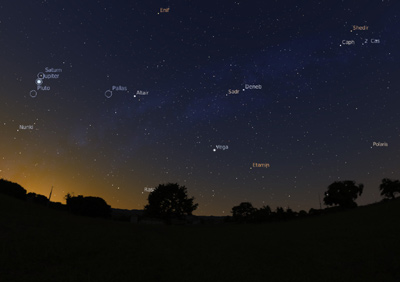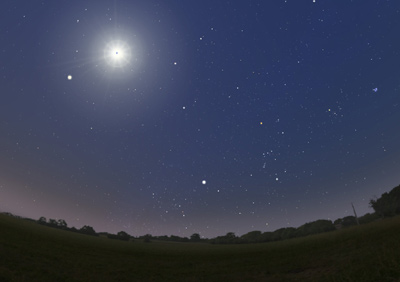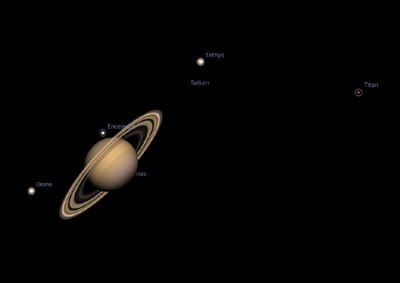Stellarium
Sep 19 2007 Wed
3:31 pm PHT
When I was reading blog entries and comments about the (Night) Sky in Google Earth, I came across several references and comparisons to other similar applications. One of these is Celestia (Wikipedia), which I raved about three years ago, and a program called Stellarium, which I’m going to rave about now.
Simply put, Stellarium (Wikipedia) is the most beautiful (as in appealing to the visual senses) free and open source software I have ever seen. Celestia is also beautiful but Stellarium raises the bar much further in terms of aesthetics.
Free and open source software (FOSS) are notorious for being very useful yet ugly and not too user-friendly. I myself primarily use a lot of FOSS like OpenOffice.org and Mozilla Firefox, and while there are efforts (like OOo and Fx) to improve user-friendliness, branding, and aesthetics, frankly, most FOSS are beasts that only the technically-inclined would love. (Ever tried configuring an Apache server by editing only the httpd.conf file in a text editor?) As a counterpoint, Apple produces some of the most visually beautiful applications around.
So it came as a delightful surprise that I gave Stellarium a run last Monday and was floored by how it has made its primary purpose—showing the sky—so poignantly beautiful. Stellarium is a planetarium application, which is a program that shows how the sky looks at any given time and on any given place on Earth. While it’s not as full-featured as KStars, another free planetarium software I’ve tried (and is quite comprehensive in its feature set if you’re a serious amateur astronomer), Stellarium makes virtually exploring the night sky a truly enjoyable experience: it shows the sky—day or night—in a very realistic manner. In Stellarium, stars (and their labels) fade in as the sun sets while the moon glows and illuminates the ground. Planets, nebulas, and galaxies are depicted as how they would look when actually seen outside, and the Milky Way provides a backdrop to the stellar show.
Unlike some other planetarium programs, Stellarium is a full 3D application, in a similar manner like Celestia. The whole solar system is depicted in 3D and animated using their real motions. Because of this, you can see in Stellarium astronomical effects that are missing in other free planetarium programs, like the moon’s libration, the changing tilt of Saturn’s rings, and the rotation of Jupiter.
Another nice special feature of Stellarium is that it goes out of its way to realistically depict lunar and solar eclipses. When you go under a total solar eclipse, the whole scene takes an eerie mish-mash of night and day. For lunar eclipses, you’ll see the moon turn blood red.
Just introduced into the latest version (0.9) of Stellarium is the ability to change your observation location to any of the planets, dwarf planets (e.g., Pluto), natural satellites, and even the Sun. Apparently, since the solar system is rendered in 3D anyway, you might as well have the ability to see how things look from the other heavenly bodies in the solar system. However unlike Celestia, you can’t just fly to any spot in outer space; you have to be on a solar system body.
While Stellarium’s user interface itself is still stuck in FOSS ugliness (e.g., some advanced features can only be accessed by a primitive text-based menu), the rendering of the sky more than makes up for its shortcomings. If you have enjoyed stargazing or have been fascinated with backyard astronomy, I would definitely recommend that you give Stellarium a try. Stellarium is available for Linux, Windows, and Mac OS X; you also need an OpenGL-capable video card. I’m quite sure you’ll be fascinated with Stellarium. 




Comments
Comments are currently disabled.